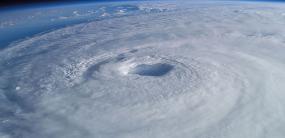Press Release
 Predictions for the 2016 Atlantic Hurricane Season have been released by several weather and hurricane forecasting institutions with varying reports on the activity level for the season.
Predictions for the 2016 Atlantic Hurricane Season have been released by several weather and hurricane forecasting institutions with varying reports on the activity level for the season.
Hurricane researchers at the Colorado State University (CSU), one of the main sources of hurricane predictions, have forecasted a near average 2016 Atlantic Hurricane Season.
The CSU forecast anticipates the development of 12 named storms for the Atlantic Hurricane Season which begins on June 1 and ends November 30. Five of the 12 are expected to become hurricanes and two predicted to reach major hurricane strength (category 3-4-5) with sustained winds of 111 miles per hour or greater.
In their report, the researchers mentioned two competing factors namely, a weakening El Niño and the far North Atlantic is quite cold, in explaining the near average prediction.
Research scientist in the CSU Department of Atmospheric Science and lead author of the report, Phil Klotzbach stated, “While shear enhancing El Niño conditions are likely to dissipate in the next several months, the far North Atlantic is quite cold. These cold anomalies tend to force atmospheric conditions that are less conducive for Atlantic hurricane formation and intensification”.
While Colorado State University is one of the main sources of hurricane predictions, other weather and hurricane research networks have released varying predictions.
Global Weather Oscillations (GWO) says the 2016 to 2017 Atlantic hurricane season will be the strongest in over four years and have predicted the formation of 17 named storms, nine hurricanes and four major hurricanes.
Chief Executive Officer of GWO, David Dilley explained, “Unlike the past three weak hurricane seasons that were suppressed by hostile atmospheric conditions and the 2015 El Niño—the next few years will be in a ‘Climate Pulse Hurricane Enhancement Cycle’ that will provide very favorable conditions for development of Atlantic Basin tropical storms and hurricanes”.
An earlier prediction this month by hurricane experts at the Pennsylvania-based AccuWeather called for the development of 14 named storms this season with eight predicted to be hurricanes and four major hurricanes.
Although they have predicted 14 named storms, their Hurricane Forecasters have indicated that there is a ‘cold blob’ which is a large, anomalous area of colder-than-normal sea-surface temperatures, located east of Newfoundland and south of Greenland, which may reduce the development of storms this year.
AccuWeather’s lead hurricane Forecaster, Dan Kottlowski stated, “This area of colder water started to show up a few years ago and has become larger and more persistent during the past couple of years. The big question is whether we will go into a La Niña, which is what we’re anticipating right now.”
Despite the varying predictions, Director of the Department of Disaster Management (DDM) Sharleen DaBreo has reinforced the message of preparedness no matter how many storms are predicted.
She said, “The number of storms predicted is not significant—preparedness is, because all it takes is for one storm to make landfall and wreak havoc in the BVI and other Caribbean islands. We are therefore encouraging persons to be prepared by familiarizing yourselves with your business continuity and family emergency plans, know where your emergency shelters are located and if you do not have a plan, now is the time to develop one”.
The Director of the DDM added, “These mixed predictions are a clear indication of the uncertainty that exists when dealing with ‘Mother Nature’ and these predictions should only be viewed as a guide for us to understand what is likely to happen and prepare for the possibilities”.
During last week’s inaugural Hurricane Hunter visit to the Territory, Director of the National Hurricane Centre (NHC) of the National Oceanic and Atmospheric Administration (NOAA), Dr. Rick Knabb stated that the NHC 2016 predictions are scheduled to be issued in May but the number of storms predicted does not matter.
Dr. Knabb said, “We have to prepare the same way every hurricane season because no matter what the number of storms and hurricanes are throughout the season, all it takes is one storm or hurricane to come to your location to make it a bad year for you”.
The average number of storms for the Atlantic Hurricane season is 12. The El Niño phenomenon results in warmer than normal ocean surface temperatures in the Equatorial Pacific while La Niña is characterised by cold ocean temperatures in the Equatorial Pacific. The term, ‘Climate Pulse Hurricane Enhancement Cycle’ refers to a period of very favourable conditions for tropical storms and hurricanes to develop.
